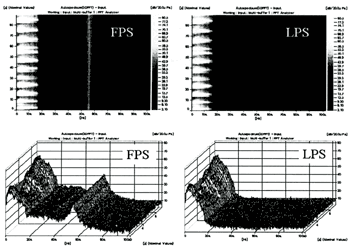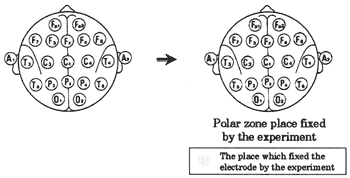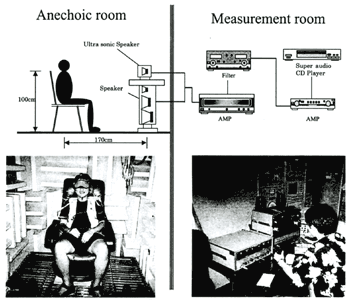|
COASTAL WAVE SOUNDS AS A RESOURCE OF COASTAL MARINE TOURISM
Jong-in Choi1, Kenji Hotta2 and Ken Yamazaki3
1Department of Oceanic Architecture and Engineering
College of Science and Technology, Nihon University
Chiba, JAPAN
k10001@ocean.cst.nihon-u.ac.jp
2Department of Oceanic Architecture and Engineering
College of Science and Technology, Nihon University
Chiba, JAPAN
3Department of Electric Engineering College of Industrial Technology, Nihon University
Chiba, JAPAN
ABSTRACT
Coastal area is one of the most attractive places not only for recreation but also for educational purposes. Recently, it is reported from psychologist that coastal wave sounds make us relaxed. The reason has not been fully clarified yet, however, recently also it is reported that in audible sound which contains high frequency sound, so called ultra-sonic property of frequency, makes human brain waves vitalized. Most of related past research has been made based on the audible sound. The authors conducted several experiments using ultra-sonic wave, which was recorded from actual wave sound at the coast and examined its influences. In this paper, the method and obtained result of experiment will be introduced and finally from in the perspective of coastal marine tourism, sound resource management, as a new resource in the coastal area, will be discussed.
INTRODUCTION
Human beings can recognize outside environmental information through the five senses (sight, hearing, taste, touch and smell). Of these five senses, the sense of hearing, which makes us recognize sound, is always functioning, and sound is an important factor with regard to discerning whether or not we find something pleasant.
With environmental sounds that exist in the natural world, a large distinction can be made between audible sounds that can be heard through the ears of human beings, and ultrasonic waves that cannot be heard.
In recent years, there have been reports that in the field of music, high-frequency
sound elements (ultrasonic waves) contained in music increase activity of the alpha waves of human brains
( Oohashi and Nishina, 1992). This suggests there is a possibility that these
ultrasonic wave elements that cannot be heard have some effect on human beings.
With regard to the influence of ultrasonic waves at natural environment sounds on human beings, through the experiments using the sounds of waves that have a rich content of ultrasonic wave elements, changes on the physiological side and the psychological side of human beings were observed. Similarly, the purpose of study is to consider influence of natural ultrasonic wave elements on human beings and discuss sound resource management as a new tourism resource in the coastal area.
This paper consists of 1) the method of experiment, 2) the results of experiment and considerations.
METHOD OF EXPERIMENT
Test subjects and presentation sounds
The subjects were students (13 males and 13 females) with normal auditory sense between 18 to 22 years of age. The presentation sound was the wave sounds recorded on the seashore in Jamaica, and was given to the subjects for 90 seconds.
The breaking times for 15 minutes were repeated between the presentation sounds, as shown in Figure 1. Moreover, the questionnaire survey (POMS) was conducted in the breaking time.
| (Enlarge: 20KB) |
 |
Figure 1. Time lag of the presentation Sound
There were two types of presentation sounds used. One was only the audible sound which did not contain an ultrasonic ingredient (LPS), and the other sound contained the ultrasonic ingredient (FPS).
Figure 2 shows a 90-second WIGUNER distribution of LPS and FPS, and a 10-second 3-dimensional frequency for the characteristics of presentation sound. From this we can find that many ultrasonic ingredients are contained in the presentation sound of FPS.
| (Enlarge: 124KB) |
 |
Figure 2. The characteristic of presentation sound
| (Enlarge: 37KB) |
 |
Figure 3. 10-20 Electrode layout method
Brainwaves
Brainwaves ware selected because they can be used as indices showing the physiological effects of environmental sounds on human beings. As shown in Figure 3, the 10-20 method was used for the positioning of the electrodes for measuring the brainwaves. The 10-20 method is the standardized method recommended by the International Brainwave and Clinical Physiology Society for the positioning of electrodes on the scalp.
POMS (Profile of Mood States)
In order to examine the mental situation after showing one presentation sound, a POMS questionnaire survey was conducted on every subject.
Experimental room
Figure 4. Experiment specification figure
As shown in Figure 4, the experiments were carried out in an anechoic room. The anechoic room was insulated from the outside sounds and absorbed the reflection of inside sounds so that there was no influence from any sounds apart from the sounds being used. Also, air-conditioning of the room was managed, maintaining the room temperature between 22℃ to 25℃ with the humidity between 55-75 percent. There were also no air currents in the room. The speakers were positioned, taking into consideration the direction of ultrasonic waves, with the front toward the test subject. The two speakers and the test subject made up a three point triangular shape.
Equipments Used for Releasing the Sounds and Measurement
Figure 5 shows the arrangement of the equipment and the testing set. With regard to releasing the sounds, special speakers that can reliably replay sounds in the high-frequency range were used to deliver the ultrasonic waves. The range of the replay frequencies was between 5,000 and 120,000 Hz, and there was no problem recreating the ultrasonic wave range used in the experiments. The brainwaves were measured from each of the 12 electrodes attached to the scalp conducted the level of electrical impulses produced by activity of the nerve cells in the brain, and these were recorded by the hard disc.
| (Enlarge: 89KB) |
 |
Figure 5. Composition of equipment and experimental photo
Method for the analysis of Brainwave
The brainwave data classified by frequency band were acquired every 5.12 seconds, and it was analyzed focusing on the quantitative change in each frequency band of brainwaves. From the brainwave of each subject's twelve electrodes by every presentation of LPS and FPS, frequency analysis was carried out and then classified into zone of δ, θ, α and β wave. Each amount of the brainwaves for every subject (from 5 to 90 seconds after sound presentation) was obtained and compared with the difference of the amount of LPS and FPS.
|